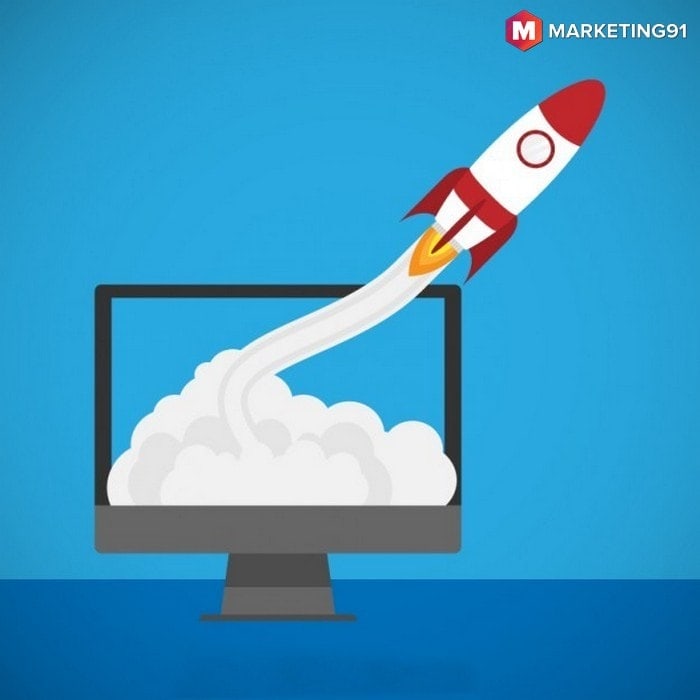A product launch is an event which is organized to launch a product in the market. The product can be completely new or can be an upgraded version of the existing product in the market.
A product launch is when a company introduces a new product in the market. A product launch can also be considered as a marketing strategy to attract the consumers in large number and to boost the sales of the product from its very first day in the market.
A product launch is not only organized for new products, but it is also organized to introduce an existing product with up-gradation and further innovation. In the present competitive environment, companies use every possible technique to maximize the sales of their products in a short period.
Therefore, a company spends a lot of time to plan the launch of a product, and a series of events are organized to make the grand release of the product.
A product launch is made of various elements. Let us learn about them one by one.
- A clear marketing positioning and messaging tagline.
- Features and capabilities of the product as per the current marketing needs.
- The product launch should make an influential impact.
- Predetermined goals of the product launch.
- The pre-decided and proper time of launch.
These elements are essential to make a product launch successful. Plan and work on them before you throw your product open in the market.
In the next section, you will learn about the advantages and disadvantages of a product launch, and you will learn about the different types of product launch to choose for the launch of your product.
Table of Contents
Advantages of Product Launch
In the present competitive environment, companies spend a million dollars on the product launch of a product to get the attention of customers and to get the maximum sales in the initial months when the product is launched.
A new product or the upgraded version of an existing product can be introduced in the market with enthusiasm using a product launch event.
A well-planned and good product launch help in the followings:
#1. Creates awareness:
A well-planned product launch can be used as a marketing opportunity for the product. It creates awareness about the product, and people learn about the features that the product has to offer. A proper product launch helps people to make up their mind to buy the product.
#2. Boost sales in the initial months of the launch:
As people become aware of the features of the products. They can buy it as soon as it is launched in the market. In this way, companies can earn a big portion of the expenditure that they made in the production and marketing of the product. Initial few months right after the product launch are very important for the sales of the product.
As the product has the latest features and is sold at the full price and as the product becomes, old companies have to reduce the prices of the product to keep the sales up of the product. Therefore, it is very important to recover the maximum cost in the initial months.
#3. Creates publicity:
A well-planned and organized product launch is a great source of publicity for the product. People consider the product of great value if it is launched using proper marketing tactics.
For example, if you invite a celebrity to launch a product, then the followers of that celebrity will automatically establish a liking for your product. In addition to this, you can pay media to telecast and broadcast your product launch so that it can reach more and more people.
#4. Planning and staffing required for the product:
A product launch gives you an estimation of the demand for the product. Based on that information, you can design and implement strategies and other requirements such as the staff required and the training provided to them.
In addition to this, you can prepare for other resources and all other preparation that you are required to make to launch the product in the whole market.
#5. Provides a competitive edge:
A product launch provides an edge over your competitors in the market. If you plan product launch properly, then you can increase its fan base easily and can make people choose your product over the product of your competitor.
A product launch can create a positive image of the product, which helps make the brand name and image in the market.
#6. More Business Opportunities:
A right product launch can provide you better opportunities to expand your business. For example, if you own a start-up company, then launching your product can get you more business offers from the companies larger in size then your company.
For example, they might want to invest in your company based on revenue generation, or they might want to acquire your company. You can decide whether to accept the offer or not.
Disadvantages of a product launch
#1. Additional Work:
Your product launch must go right. A successful product launch requires a lot of additional work.
#2. Planning:
It is important to plan the product launch properly if you want the right results from it. The planning might require you to have an expert team which can plan your product to launch a successful event.
#3. Additional expenditure:
Planning, preparation, and the organization of the product launch can be an expensive event which might require a separate budget. Having a separate budget sometimes is not possible for the small budget and startup companies.
#4. Can put negative impact:
If a product launch goes wrong then rather than creating a positive brand image, it will put a negative impact on the image of the brand.
#5. Your ideas can be stolen:
A product launch is an initial stage when the product is launched but is not yet available in the market. Your competitor companies can take advantage of that period and also produce similar products to give competition to you and to share your market share.
This can not only impact your revenue generation but also give choices to people to choose from different options available.
Types of Product launch
There are two different types of product launch. A company can choose the type that suits their product and budget most.
Followings are the two different types of product launch:
#1. Soft Launch:
A soft launch of a product is done in a specific area or for a limited target audience. The purpose of the soft launch is to check the performance of the product and to make the required changes in the features or price of the product before launching it completely for all customers.
A soft launch is a test launch of the product to get the feedback of the customers so that the quality of the product can be improved.
#2. Hard Launch:
A hard launch of a product is done with full excitement and fervor. The word of the product launch is spread all around the world with full marketing efforts.
The purpose of the hard launch of a product is to grab the attention of customers and boost the sales of the product as soon as it is launched.
Here is a video by Marketing91 on Product Launch.
Steps in Product Launch
There are certain steps which have to be taken before the launch as a part of its preparation.
1. STPD Analysis
Before a product is launched, the company must perform STPD Analysis. Segmentation, Targeting, Positioning, and Differentiation Analysis should be performed to understand the viability of the product and the acceptance of the product.
Performing these steps help the marketeers to place the product and make the necessary changes to make it more viable in the market.
2. Communication Tools
Next important thing after knowing who are the target audiences and how to position the product would be to how to reach them. Using proper modes of communication to write target audience is essential to convey the message.
This is also very important in establishing a brand image and brand value for the customer. For example, it makes sense to advertise digital courses via digital media. That is why social media marketing is a very important role in promoting digital courses.
On the other hand, to promote regular offline classes, offline marketing should be used like putting up informercials near schools and libraries during the admission period.
3. Market Research
Before launching any product, the market research team must conduct a detailed survey about the available products and their competitors in the market along with the potential of the market and the viability of the product.
The market research also shows what the nature of demand in the market is and what kind of product is expected by the customers. The primary objective of market research is to find the problem and address it.
Sometimes market research also addresses the need of the customers in which case the companies perceive the result of the research to develop the product and deliver it to the customers.
Part of the research also includes identifying customer buying patterns and determining the average Product life cycle in the market.
4. Competition and market analysis
Some companies perform competitor and market analysis in the market research while in other cases where the product is of high importance, these and other tests have to be performed separately. Knowing the competition is very important as it helps to place the product accordingly.
Having a USP gives the product an edge over competitors which is what is required to establish the product. This knowledge helps the organization in preparing a better product and deliver it to the customers.
5. Market trials
Once the product is developed after the market research, proper market trials must be conducted so that the product is tested. In the case of services, trial services are given to a couple of customers, and observations are noted.
The suggestions of customers are being worked upon and change if required are made in the product of the service and then launched in the market accordingly. But it remains an important fact that market prices are essential and a determinant of success or failure of the product.
6. Marketing Plan
A well-planned marketing strategy makes the difference between success and failure of your product. The marketing plan is very crucial to make the product known to the customers. This is where an efficient marketing strategy comes into the picture.
Before a product is launched, the company has to prepare an efficient marketing strategy based on the initial market research and surveys.
The ultimate aim of marketing is to establish the brand value of the product, to build awareness and support the sales function. Marketing itself does not act as a revenue generator, but it supports the sales function.
Now that the preparation of the Product launch is finished, the next step would be to launch the product.
7. Product testing
Product testing is a part of pre-product launch preparation as well as part of product launch. This depends entirely on the nature of the product.
For consumer products, product testing is carried before the launch of the product while in the case of pharmaceutical products, product testing is carried out even after the launch is complete. This is true, especially in the case of scheduled drugs where product testing is a continuous process.
8. Team building
Another aspect of a successful product launch is having a prepared team dedicated to product management. The team should not only be prepared to face hurdles if any but also utilize the budget of the product meticulously.
It is important also to ensure that the team remains motivated throughout the process of product launch. The goals set should be achievable by the team within the defined period.
Periodic incentives on the achievement of Sales targets also keep the team motivated.
9. Inventory Management
After the product is officially launched, it is necessary that the company prepares for Sales. The ultimate aim is the sale of the product for which the marketing team prepares.
The sales of product are expected to rise for which the company has to prepare itself by making provisions of inventory.
Inventory management and making the product available at the right time and right place affect the sale positively. Inventory availability determines the success of the product since it affects the sale directly.
10. Articulate benchmarks
As a part of managing the product, defining proper benchmarks to be achieved is crucial. Once they have been defined, it is easy for the team to follow the path and reach their goals. These could be anything – from achieving sales to establishing measurable brand value, etc.
These pre-defined benchmarks act as a guide to the team. The success of a brand depends more or less on a marketing strategy which is formulated during a product launch.
11. Finance Management
While launching the product, the company, amongst other things, has to manage the finances of the product. Calculating the costs involved in the production, to inventory management, supply chain management, marketing, and advertising costs and other losses are associated costs with the product launch, which have to be kept in mind.
Excess inventory will cost a fortune to the company and overshoot the budget. Managing finances not only saves cost for the company but also increases profit which is the ultimate goal of an organization.
12. Pricing of the product
Another major factor which determines the success of a product is pricing. The product should be priced optimally and in line with the competitors.
A pricing strategy should be chalked out based on the product, and it should be in sync with the marketing strategy.
A product priced too economic would mean lower profit margins for the company while a high priced product would mean higher profits but lesser customers. All of this should be decided in advance to assist the product with a successful product launch.
13. Feedback
Once the product is launched, then customer feedback is the next step. The initial users are encouraged to share their feedback which helps the management to make necessary changes in the product.
Customer feedback also increases two-way communication between the customers and the company.
The launch feedback is also collected from internal stakeholders and employees who were directly or indirectly involved in the product launch. The positive feedback is shared to prospective customers, while negative feedback is critically evaluated and worked upon.
Liked this post? Check out the complete series on Product Management









